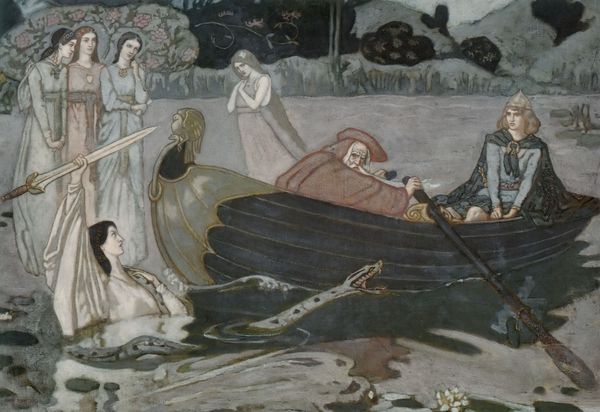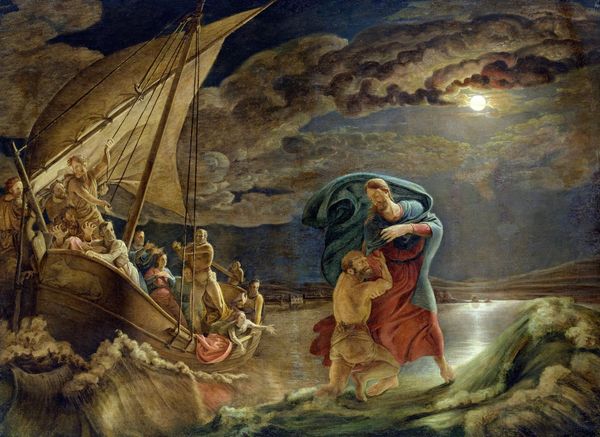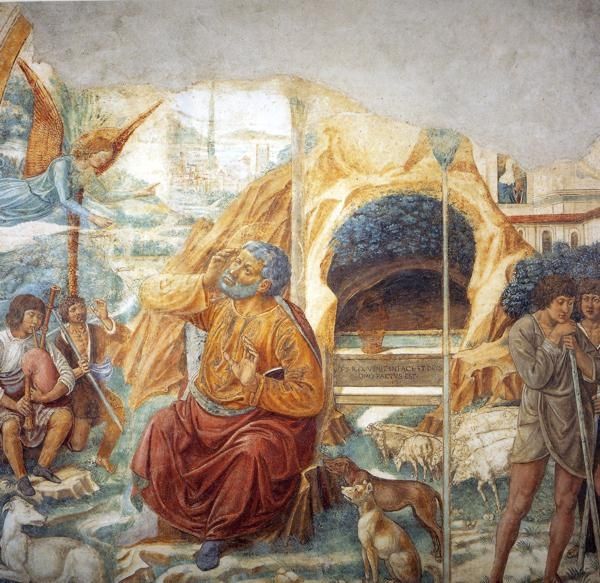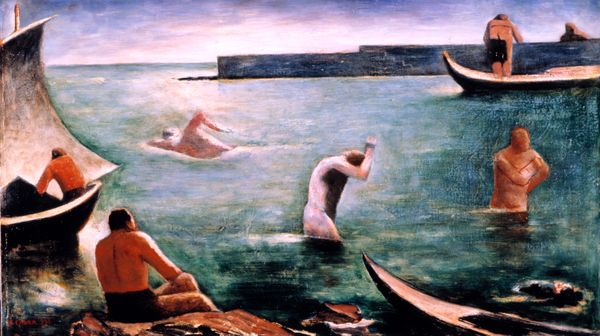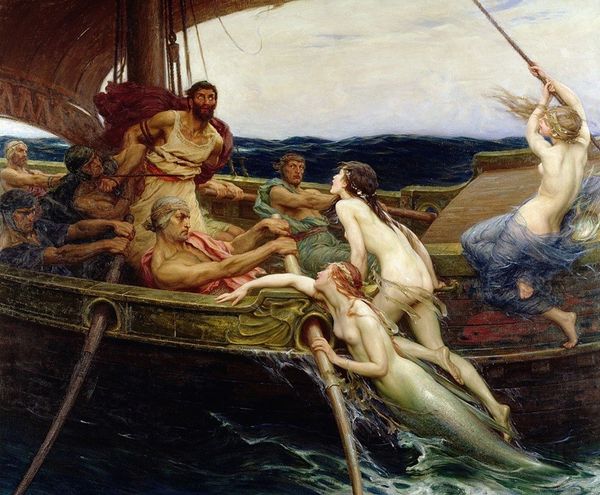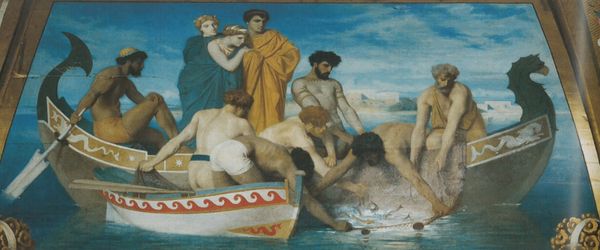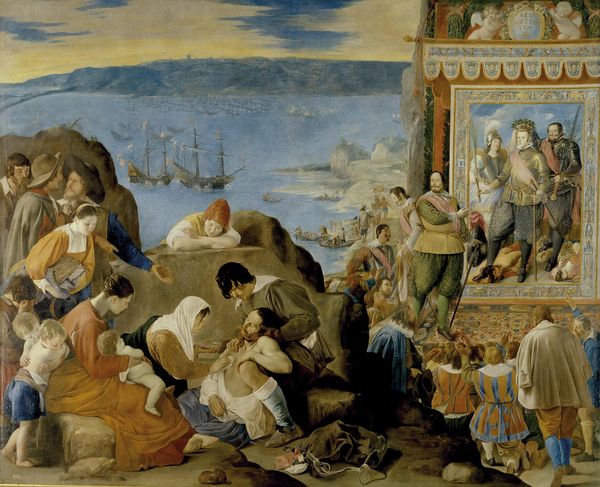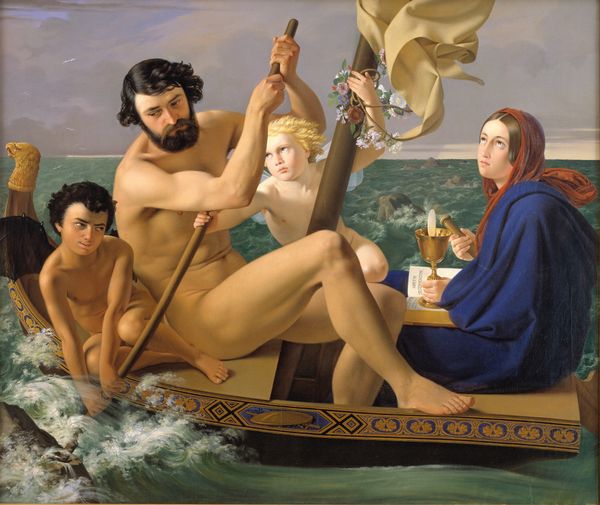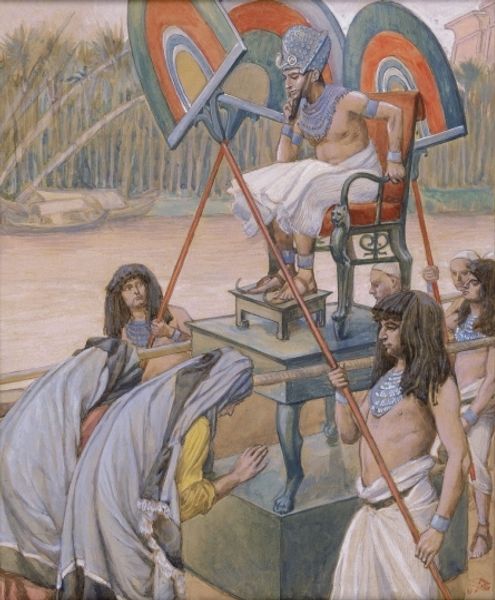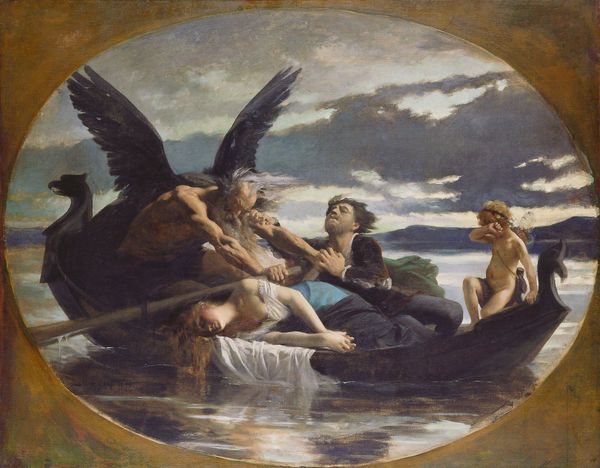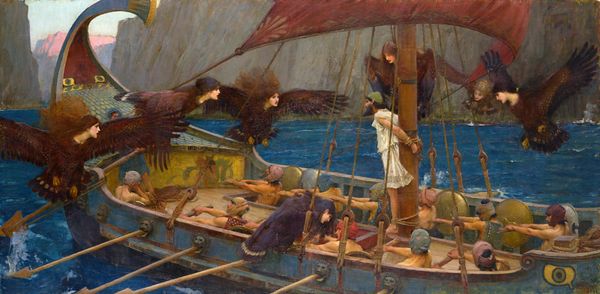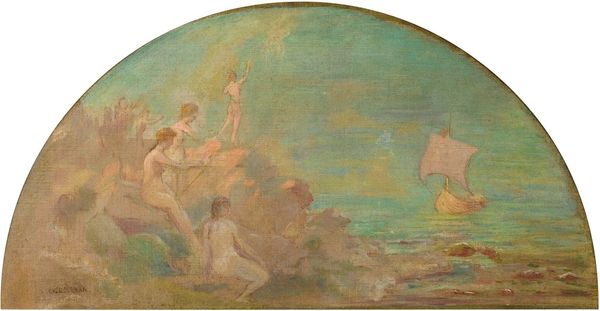
painting, watercolor
#
painting
#
neo-impressionism
#
landscape
#
figuration
#
watercolor
#
coloured pencil
#
symbolism
#
history-painting
Dimensions: height 65 cm, width 95.3 cm, depth 7.6 cm
Copyright: Rijks Museum: Open Domain
Editor: So, this is Antoon Derkinderen's "The Building of the 'Argo'," created between 1901 and 1911. It’s a watercolor and colored pencil painting, and it has this almost dreamlike, symbolic quality. I am particularly drawn to the multiple scenes it depicts all at once, each with a distinct mood. What strikes you most about it? Curator: It immediately makes me think about the weight of myth. Look at the Argo itself – it’s not merely a vessel, but a symbol of aspiration and collective effort. Notice the snake-headed prow, a common motif. Snakes often represent transformation, but also, consider the older ideas of wisdom, as this boat needs guidance to reach its destination, Colchis. And what about the people in the painting? Editor: Well, some are building, others watching from above, and some are even bathing in the distance. There's so much happening all at once! Curator: Exactly! And that tension speaks volumes. This isn't just about constructing a boat; it's about building a shared history and fulfilling a prophecy. Are the figures on the balcony observers, or are they a visual Greek chorus foreshadowing impending trials? Editor: They do seem rather stoic and judgmental, yes? Almost disconnected. And there is a horse-drawn chariot in the sky, I did not even notice at first! What do you make of that? Curator: An excellent catch. Think of that chariot as destiny bearing down, suggesting fate is inextricably linked to this grand endeavor, this great collective pursuit of knowledge. Derkinderen suggests that those myths, however old, shape our present aspirations, desires, and fears. It suggests, doesn't it, that history isn't just about the past; it lives on within us. Editor: That's fascinating, really. I came into this thinking it was just a historical scene, but now it seems laden with symbolism relevant to the present day. Thank you. Curator: The past becomes meaningful by the way we interpret its emblems, wouldn't you agree?
Comments
No comments
Be the first to comment and join the conversation on the ultimate creative platform.
